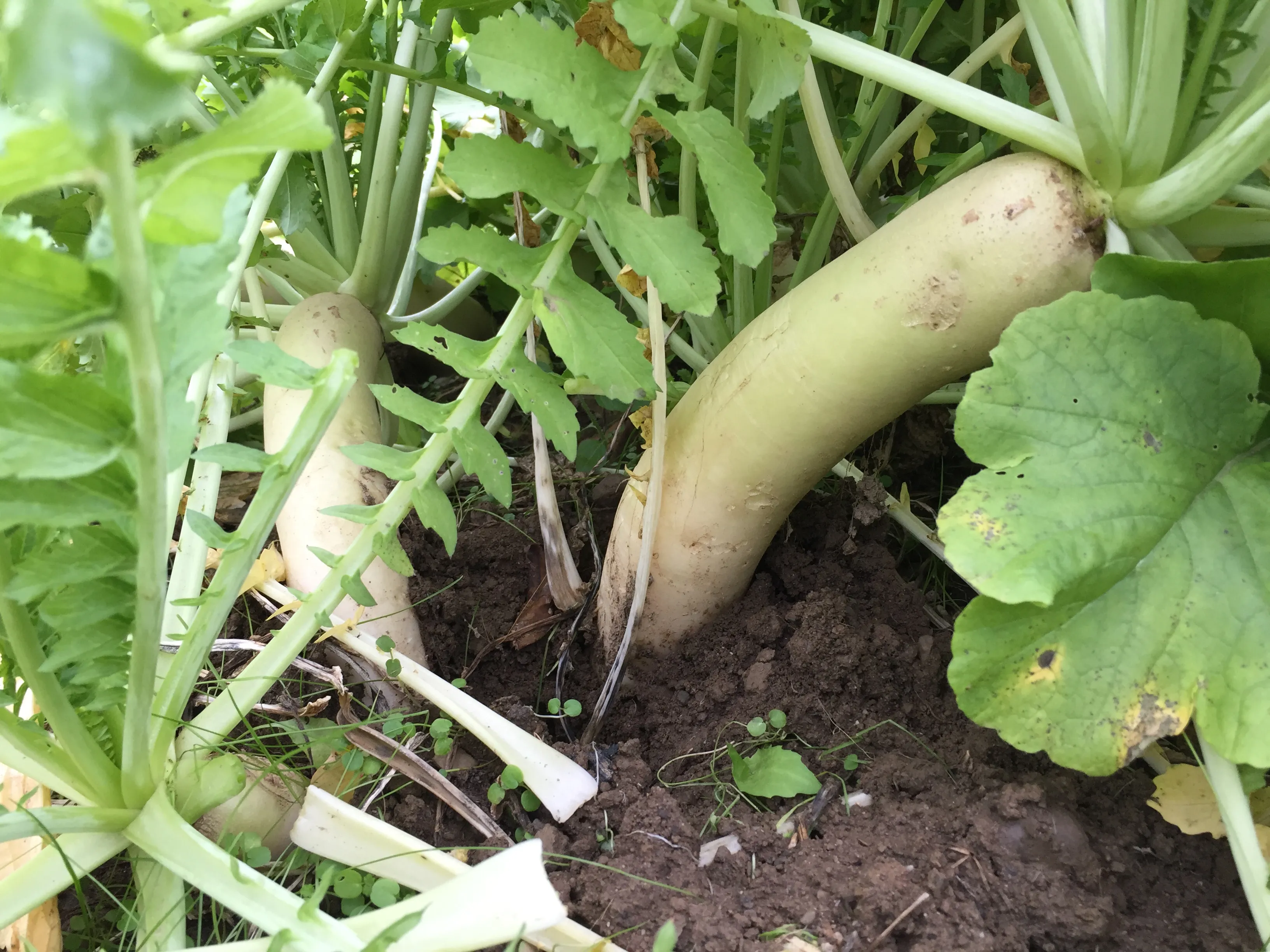Cover Crop Series: Buckwheat and Brassicas
Photo Credit to Mitch Coppin, Trowbridge Flower
Farm
Legumes, grasses, and cereals make up the majority of commonly-used cover crop species - but
there are a few other non-legumes that have value in their niche strengths, particularly in
diversified and small-scale farming. This post will take a look at a few crops that are
champions when it comes to scavenging phosphorus, attracting beneficial insects, and serving as
powerful biodrills and potent biofumigants.
BUCKWHEAT
-
Benefits: Buckwheat is a solid summer smother crop with a quick turnaround: its root system creates a fine, friable tilth, and it breaks down in the soil quickly. It is well known for its ability to scavenge phosphorous (which then becomes available to the following crop as residues break down). Buckwheat is also an attractive host to beneficial insects, from bees to minute pirate bugs, lady beetles, and predatory wasps. SARE recommends leaving buckwheat to flower for a minimum of 20 days, to allow minute pirate bugs to reproduce.
-
Growth: Though it may wilt a little in the midday heat, not to worry--much like the melodramatic summer squash, it grows well in warmer temperatures and will perk back up later in the day. Buckwheat tolerates poor soils but not drought or frost. It is relatively low-growing, and if mowed before 25% bloom, buckwheat will regrow.
-
Other Factors/Challenges: Buckwheat’s speedy turnaround time means that it is also quick to set seed. If planning multiple successions of buckwheat, you can make this work for you, allowing the previous succession to seed the next. In this case, you need only worry about catching the last one before seed set. Apparently, some growers bring new land into production by raising three successive buckwheat crops this way.
FORAGE OR OILSEED RADISH
-
Benefits: Referred to somewhat interchangeably as the forage, tillage, oilseed, Japanese or daikon, this radish (R. sativus L. var. oleiformis and niger) is an adept nutrient scavenger and a powerful biodrill: an excellent weapon to have in your arsenal if you are looking to break up deeply compacted soils. Roots often reach 14-16 inches, while determined taproots dig even deeper (as far as 6 feet). The tender, winter-killed radishes then decompose easily, leaving cavities that channel water, air, and nutrients down into the newly chiseled soil, enriching your sub soil and increasing water penetration. Subsequent cash crops can utilize these channels. If planted early enough, these radishes will also suppress fall weeds with their lush, dense stand of leaves.
-
Growth: The fall-planted forage radish thrives in the cooler temperatures of early autumn, before winterkilling. Plant August-September, depending on your location, to establish a canopy sufficient to suppress weeds, especially as forage radishes offer less ground cover than other brassicas such as rape and turnips.
-
Other Factors/Challenges: It’s generally best not to include forage radish (or any brassicas) in rotation with brassica cash crops, due to the increased likelihood of pest and disease issues. Consider planting with a winter-hardy grass or cereal for good soil coverage over the winter and to scavenge and hold nitrogen from decomposing radishes in spring.

Photo Credit to Lauren Kaplan, Fishkill
Farms
Mustards offer some of the same benefits as the forage radish, including nutrient scavenging and
suppression of weeds in the fall (by outcompeting) and in the spring (by the release of toxic
compounds after mowing and incorporation). They are similarly easy to incorporate and quick to break
down, and should not be used in rotation with other brassicas.
Most brassicas, and mustards, in particular, can also be used in biofumigation. Nearly all
brassicas produce glucosinolates, which are released when individual plant cells are ruptured. The
degradation of glucosinolates creates toxic compounds -- some of which, including isothiocyanate,
appear in commercial fumigants. These compounds can assist in managing soil pathogens and plant
parasitic nematodes.
For effective biofumigation, it is recommended that brassica covers be treated
like cash crops. Ample fertility and moisture are key to establish a healthy, robust stand of
plants with sufficient accumulation of the compounds necessary for effective biofumigation.
Decisions to terminate the cover are made based on having attained the critical mass of these
compounds, and not (as with many cover crops) on factors such as soil moisture or the schedule of
the following cash crop. Close adherence to recommendations for terminating and incorporating the
crop (including flail mowing, rototilling for shallow incorporation, rolling, and ensuring adequate
soil moisture for distribution of key compounds) are also integral to biofumigation success.
There is much we have yet to learn about the effectiveness and economic feasibility of
biofumigation. Still, it is an exciting field, and worth looking into if you’re open to
experimenting with using your cover crops in organic farming and control of pathogens and pests.
For more on brassicas and mustards, check out SARE’s comprehensive chapter (including a summary of studies done on the
risk of nematodes when growing brassicas, a run down of the major species, and a note on brassica
covers doubling as cash crops). University
of Missouri extension offers a nice, comprehensive overview of buckwheat (including variety
selection and field prep) as both a cover and cash crop. (If buckwheat as a beneficial insect
habitat appeals to you, you may also consider incorporating phacelia, a winter-hardy plant with
nutrient-rich nectar and great value in providing habitat for pollinators. Click here for a nice fact sheet on phacelia.) Follow the links to view
Cornell’s succinct and practical guides to buckwheat, forage
radish, forage
turnips and rapeseed, spring mustard and fall mustard.
Links:
http://www.mccc.msu.edu/documents/Fittingbio-fumigantcovercropsintointensivevegetableproductionsystemsforintegratedcropmanagement.pdf
If you liked this article, and want to see more like it, enter your email in the subscribe box to the top-right of this page and we'll send you new blog articles as we publish them.

After graduating from UCSC's
Center for Agroecology and Sustainable Food Systems, Lauren Alexandra Kaplan spent a season at
an organic CSA farm in California before returning east to farm in the Hudson Valley. Prior to
pursuing farming full time, she worked in book publishing and helped to launch an urban farm in
NYC. Alexandra is an avid salsa dancer and maker of jams, pickles, and kraut.